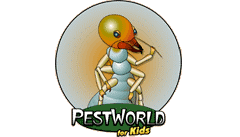Ants
Ants
Ants are one of many pests that just never accept that they are not welcome. An ant can cause a lot of frustration. Integrity Pest Management can control any ant problem. For years we have been overcoming pest problem and our ant treatments will solve your problem. Call Integrity Pest Management we will be ready when you are 918-245-7378 (245- PEST)
An ant’s heritage tracks back to the beginning of time and you can find an ant on almost every continent. They are truly a universal pest. With about 20,000 species living on earth, ants often referred to as Earth’s most successful species.
An ant’s home structure will vary depending on its species. They live in homes that range from mounds built out of dirt and sand to mounds built out of dirt, sand and small twigs to make a stronger mound that offers protection in the rain. Western Harvester ants start with a mound above the surface, they tunnel about 15 feet straight down and then hibernate during the cold months. An ant’s home/mound is made of groups of chambers connected by tunnels. The chambers, used for nurseries, food storage, and resting places, are so important to the worker ants.
There is such a variety of homes in the ant community. For example, some ants even live in pieces of wood like termites but army ants don’t make a home at all. Army ants travel in large groups in search of food.
All about them:
Ants are social insects. They live in large groups or “colonies”. An ant colony can have millions of occupants.
Three different types of ants in ALL ant species:
1. The queen ant
2. The sterile female workers
3. The males
A male ants purpose is to mate with future queen ants. The male ant will serve his purpose but won’t live long, whereas, the queen will grow to adulthood. Queen ants will mate and spend the rest of their life’s producing eggs. A colony of ants may just have one queen, but there could be many queens. Many colony difference will depend on the species. Just as humans ants go through stages of development. Four stages to be exact: egg, larva, pupa and adult.
For more about ants click here! And for information on all sorts of other pests visit our Facebook page.


